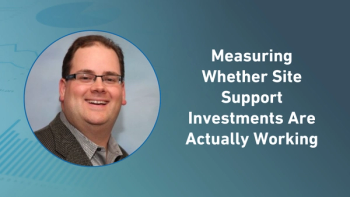Key takeaways
Digital intake must be the default to ensure quality and efficiency: Prioritizing digital-first adverse event intake—tailored to the reporter's persona—improves data quality and reduces delays. Unified intake tools should be source-agnostic, multilingual, and API-connected to streamline real-time data capture and minimize manual interventions.
Scalable, AI-powered systems are now a core PV requirement: With growing complexity in therapies and global PV regulations, configurable, AI-supported platforms can guide accurate data capture, handle indirect sources (like social media or PSP vendors), and automate structured case reporting—improving both speed and compliance.
Unified global-local workflows reduce risk and operational overhead: Integrating PV workflows across geographies and stakeholders reduces fragmentation, eliminates redundant processes, and supports proactive compliance. A harmonized approach is critical to supporting patient safety while controlling costs and avoiding audit issues.
The need for unified, digital-first pharmacovigilance
Diverse data sources and a global pharmacovigilance (PV) market mean we need to urgently adopt new, unified approaches to PV. At the same time, patient centricity, an increase in support programs, complex medicines, combination products, as well as the rise of personalized medicine are all increasing awareness of the need for agile approaches which put patient safety at the forefront.
In this evolving environment, adverse event approaches must prioritize digital intake wherever possible, providing the right digital tools tailored to the right reporter personas at the point of intention to report are essential to capture the highest quality data when it matters most. A joined-up ecosystem with connected application programming interfaces (APIs) is vital to ensure seamless data flow, for all indirect sources. Where digital intake is not possible, AI enabled document ingestion capabilities must complement the system, to streamline intake across all case sources.
Fully configurable, AI-powered elements are essential to maximizing the capture of critical data that supports patient safety, particularly in the context of complex therapies where data collection is rarely straightforward. One-size-fits-all solutions fall short as adaptable systems are needed to reflect real-world variation while maintaining regulatory compliance.
A global pharmacovigilance landscape
Pharma companies are migrating their economic and research activities to emerging economies including Brazil, China, and India.1 This has several implications for PV.
Countries which were typically less progressive from a PV perspective are exploring how to develop more robust frameworks which will allow the organized collection, evaluation, analysis, and dissemination of data. However, there are still significant differences in PV performance, digital and holistic multi-stakeholder approaches are required to strengthen PV systems in their nascent phase.2 This is an opportunity to start in these markets the right way, with the appropriate digital tools, similar to how mobile telecom infrastructure leapfrogged landlines in developing markets.
An increasingly global market means tracking new and updated PV-relevant regulations has become even more complex. Effective PV regulatory intelligence needs to span multiple countries and languages to keep up with increasing compliance expectations from regulatory agencies. If not managed correctly, this can lead to more labor-intensive, inefficient manual tasks. Digital tools provide an opportunity to handle rules programmatically.
While organizations are always striving for a centralized, standardized process, many are still unable to achieve total harmonization between local and global data. It is vital to consider how we standardize both local and global PV processes and what part a robust digital system can play.
A focus on patient centricity and patient safety
Patient centricity and patient safety should be at the center of every stage of clinical research. More than a third of all new drugs approved by the FDA in 2023 were personalized medicines and there was a 75% increase in biopharmaceutical industry investments in developing new personalized medicines over a five-year period.3
The number of cell and gene therapies launched annually has more than doubled over the past 10 years.4 At the same time, patient support programs are strengthening product portfolios and increasing adherence.5
Patients are also becoming more aware of their value as research partners and the importance of reporting side effects, particularly since COVID—and they have more ways to share their experiences than ever before. Social media platforms, including online health forums, have been identified as a valuable and rich source for detecting previously unreported, timely, global adverse drug reactions.6 Where possible, digital tools should be embedded within these platforms (e.g., within social media profiles) to capitalize on the intention to report and obtain the best possible data at source.7
Patient-generated data represents an important opportunity to decreases the established risk of underreporting,8 but it also adds a new layer of complexity to PV activities.
Importantly, the moment a reporter intends to share information—whether a patient, PSP vendor, healthcare provider, or sales representative—it is the best opportunity to capture complete, high-quality data. Follow-up efforts often have lower success rates, making it essential to capitalize on the initial intention to report by providing intuitive, easy-to-use digital tools tailored to each persona.
The solution: Unified approaches
In a global, patient-centric research environment, intake tools need to be source agnostic and work across multiple markets and work for all users. A unified approach is vital if we are to decrease operational costs and increase efficiency and productivity. Unified intake platforms must:
- Intention to report: Provide an intuitive and engaging reporting experience that works on users’ preferred devices and in their local language, capturing direct digital case data through persona-tailored tools that ensure therapy-appropriate detail.
- Indirect sources: Intake data for indirect sources through a connected ecosystem and API integrations.
- AI powered document ingestion for analogue sources where digital intake at source is not possible.
- Achieve global consistency with a single, centralized, and fully audit-trailed solution for all intake routes and follow up.
- Configure digital workflows that adapt to regional regulatory needs while maintaining global oversight.
When digital-first capture is achieved, follow-up workflows are transformed: digital tools can reconnect directly with original reporters through the same secure interface, minimizing duplication, maintaining traceability, and supporting faster, more complete case management.
It is vital we get this right so the continued safety profile of products remains accurate and, ultimately, we can ensure we are saving patients’ lives.
Reducing effort and costs
Unified capture of data through a single workflow engine enables digital intake at source or automatic import of structured forms across languages. This streamlines how data is processed, removing the need for complex processes and translation delays and helping to ensure we get data right first time. It also removes the need for different processes in different countries, and internal versus external stakeholders, significantly reducing the costs associated with managing inputs.
Yet even in 2025, a significant proportion of cases, from paid professionals, or those with an obligation to report, are still reported via emails and unstructured documents. This legacy approach hinders processing and does not guarantee data quality. Scalable, structured digital intake platforms that capture data at source are now a necessity, and a duty where the appropriate technology is available.
High performance cloud infrastructure can also be utilized to manage rapid shifts in adverse event reporting. For example, a cloud-native case intake module can offer an end-to-end solution, integrating different APIs to gather, read and process the data and automatically enter it into the structured individual case study report fields.
An AI-driven approach can support intake by guiding users to provide the best possible data, suggesting intelligent follow-up where needed, and enabling seamless real-time translation. While AI currently defers to human judgment for final review, it already performs much of the heavy lifting—improving both the speed and quality of case processing.
Precise, tailored data capture
Further efficiencies can be achieved by a seamless integration through a joined-up API driven eco-system eliminating manual reconciliations between different systems, directly from reporter interactions.
Configurable AI powered tools are vital for capturing the complex, real-world data needed to protect patient safety, especially with complex medicines and personalized therapies where standard approaches fall short.
Options should include highly configurable data intake and output including, downstream integrations with seamless API powered data flows, auto translation, multi-language intake, and intelligent library searches. They should also allow companies to use their own product lists and white label with their own brand.
By enabling the creation of digital forms, experiences, and data flows for all use cases—whether this is from direct reporting by patients, caregivers, healthcare professionals, or field teams to indirect reporting via a connected API ecosystem and AI-powered document ingestion—this unified platform ensures precise, diverse data capture through a single, integrated data and workflow environment.
Conclusion
As an industry we need to adapt to a changing regulatory and data environment with patient centricity and new technology at its core.
Instead of simply throwing people at the problem every time we see an increase in case volumes, we need solutions which are agile, future-proof and sustainable. We need integrated platforms which reduce effort and cost, eliminate inefficient manual processes, reduce follow up and decrease the risk of audit findings.
By adopting unified approaches, we can standardize both global and local practices. This will allow us to improve trial efficiency and ultimately, what matters most—patient safety.
Daniel O’Keeffe, VP, product, Qinecsa Solutions
References
- https://www.efpia.eu/media/637143/the-pharmaceutical-industry-in-figures-2022.pdf
- https://pmc.ncbi.nlm.nih.gov/articles/PMC9356965/
- https://www.personalizedmedicinecoalition.org/
- https://www.iqvia.com/insights/the-iqvia-institute/reports-and-publications/reports/strengthening-pathways-for-cell-and-gene-therapies
- https://www.iqvia.com/-/media/iqvia/pdfs/asia-pacific/white-papers/design-and-refine.pdf
- https://journals.sagepub.com/doi/full/10.1177/14604582221136712
- https://pmc.ncbi.nlm.nih.gov/articles/PMC8053157/
- https://www.tandfonline.com/doi/full/10.1080/14740338.2023.2224558





